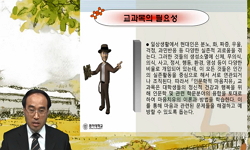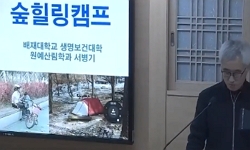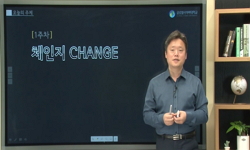Diabetes can impair neovascularization important for wound healing, and this study investigated the hypothesis that this effect can be reversed by an active provisional matrix. Here, a 3D collagen scaffold and uncultured adipose-derived SVFs were firs...
http://chineseinput.net/에서 pinyin(병음)방식으로 중국어를 변환할 수 있습니다.
변환된 중국어를 복사하여 사용하시면 됩니다.
- 中文 을 입력하시려면 zhongwen을 입력하시고 space를누르시면됩니다.
- 北京 을 입력하시려면 beijing을 입력하시고 space를 누르시면 됩니다.



Effect of Collagen Scaffold with Adipose-derived Stromal Vascular Fraction Cells on Diabetic Wound Healing: A Study in a Diabetic Porcine Model
한글로보기https://www.riss.kr/link?id=A105870944
-
저자
Yanan Jiang (Nanjing University Medical School) ; Bing Chen (Institute of Genetics and Developmental Biology) ; Yongbo Liu (Nanjing University Medical School) ; Zhongyin Zhufu (Nanjing University Medical School) ; Xin Yan (Nanjing University Medical School) ; Xianglin Hou (Yantai Zhenghai Biotechnology Inc) ; Jianwu Dai (Institute of Genetics and Developmental Biology) ; Qian Tan (Nanjing University Medical School)
- 발행기관
- 학술지명
- 권호사항
-
발행연도
2013
-
작성언어
English
- 주제어
-
등재정보
KCI등재후보,SCIE,SCOPUS
-
자료형태
학술저널
-
수록면
192-199(8쪽)
-
KCI 피인용횟수
9
- DOI식별코드
- 제공처
-
0
상세조회 -
0
다운로드
부가정보
다국어 초록 (Multilingual Abstract)
Diabetes can impair neovascularization important for wound healing, and this study investigated the hypothesis that this effect can be reversed by an active provisional matrix. Here, a 3D collagen scaffold and uncultured adipose-derived SVFs were firstly utilized to construct a collagen-targeting system for wound healing in a diabetic porcine model. The diabetic porcine models were made by injected streptozocin (STZ) intravenously and removed full thickness skin from the dorsum. Each animal received four different samples: Group A (control groups, n=24), Group B (SVFs groups, n=24), Group C (scaffold groups, n=24), Group D (SVFs -scaffold groups, n=24). PBS was applied to the wounds in Group A. 1×105 SVFs suspended in PBS were sprayed on the wounds in Group B. Scaffolds only with PBS were covered on the wounds in Group C. Scaffolds with equal volume of cell suspension containing 1×105 SVFs were covered on the wounds in Group D. The healing rates were calculated and compared among the groups and the tissues of the wound were taken and evaluated for histological analysis. The diabetic wound treated with the SVFs -collagen scaffold showed a significant decrease in wound size, an increase of neovascularization and a maximum VEGF and bFGF expression in comparison with SVFs and scaffold alone. The SVFs-collagen scaffold accelerates wound healing since it stimulates higher capillary formation causes major proangiogenesis factors expression in diabetic pigs suffering from skin defects, suggesting this approach could have utility for diabetic wound healing.
참고문헌 (Reference)
1 V Falanga, "Wound healing and its impairment in thediabetic foot" 366 : 1736-, 2005
2 M Sumi, "Transplantation of adiposestromal cells, but not mature adipocytes, augments ischemiainducedangiogenesis" 80 : 559-, 2007
3 L Sheng, "Transplantation of adiposestromal cells promotes neovascularization of random skin flaps" 224 : 229-, 2011
4 S Balaji, "Tissue-engineeredprovisional matrix as a novel approach to enhance diabeticwound healing" 20 : 15-, 2012
5 D Marcelo, "Tissue therapy withautologous dermal and epidermal culture cells for diabetic footulcers" 13 : 241-, 2011
6 WS Kim, "The wound-healing andantioxidant effects of adipose-derived stem cells" 9 : 879-, 2009
7 SK Han, "The treatment of diabeticfoot ulcers with uncultured, processed lipoaspirate cells: a pilotstudy" 18 : 342-, 2010
8 R Blakytny, "The molecular biology of chronicwounds and delayed healing in diabetes" 23 : 594-, 2006
9 EK Kim, "The effect of human adiposederivedstem cells on healing of ischemic wounds in a diabeticnude mouse model" 128 : 387-, 2011
10 RJ Aviles, "Testing clinicaltherapeutic angiogenesis using basic fibroblast growth factor(FGF-2)" 140 : 637-, 2003
1 V Falanga, "Wound healing and its impairment in thediabetic foot" 366 : 1736-, 2005
2 M Sumi, "Transplantation of adiposestromal cells, but not mature adipocytes, augments ischemiainducedangiogenesis" 80 : 559-, 2007
3 L Sheng, "Transplantation of adiposestromal cells promotes neovascularization of random skin flaps" 224 : 229-, 2011
4 S Balaji, "Tissue-engineeredprovisional matrix as a novel approach to enhance diabeticwound healing" 20 : 15-, 2012
5 D Marcelo, "Tissue therapy withautologous dermal and epidermal culture cells for diabetic footulcers" 13 : 241-, 2011
6 WS Kim, "The wound-healing andantioxidant effects of adipose-derived stem cells" 9 : 879-, 2009
7 SK Han, "The treatment of diabeticfoot ulcers with uncultured, processed lipoaspirate cells: a pilotstudy" 18 : 342-, 2010
8 R Blakytny, "The molecular biology of chronicwounds and delayed healing in diabetes" 23 : 594-, 2006
9 EK Kim, "The effect of human adiposederivedstem cells on healing of ischemic wounds in a diabeticnude mouse model" 128 : 387-, 2011
10 RJ Aviles, "Testing clinicaltherapeutic angiogenesis using basic fibroblast growth factor(FGF-2)" 140 : 637-, 2003
11 S Liu, "Synergistic angiogenesispromoting effects of extracellular matrix scaffolds and adiposederivedstem cells during wound repair" 17 : 725-, 2011
12 SP Boudko, "Structure formation in the Cterminus of type III collagen guides disulfide cross-linking" 335 : 1289-, 2004
13 L Zimmerlin, "Stromalvascular progenitors in adult human adipose tissue" 77 : 22-, 2010
14 D Goodridge, "Quality of life ofadults with unhealed and healed diabetic foot ulcers" 27 : 274-, 2006
15 Y Wu, "Mesenchymal stem cells enhancewound healing through differentiation and angiogenesis" 25 : 2648-, 2007
16 F Lu, "Improved viability ofrandom pattern skin flaps through the use of adipose-derivedstem cells" 121 : 50-, 2008
17 JY Kim, "Human cord blood-derivedendothelial progenitor cells and their conditioned mediaexhibit therapeutic equivalence for diabetic wound healing" 19 : 1635-, 2010
18 F De Francesco, "Human CD34/CD90 ASCs are capable of growing as sphere clusters, producinghigh levels of VEGF and forming capillaries" 4 : e6537-, 2009
19 SD Lin, "Engineering adipose tissuefrom uncultured human adipose stromal vascular fraction oncollagen matrix and gelatin sponge scaffolds" 17 : 1489-, 2011
20 TT van Sloten, "Diabeticfoot: new insights into pathophysiology and treatment" 152 : 2400-, 2008
21 C Rinsch, "Delivery of FGF-2 butnot VEGF by encapsulated genetically engineered myoblastsimproves survival and vascularization in a model of acute skinflap ischemia" 8 : 523-, 2001
22 AJ Singer, "Cutaneous wound healing" 341 : 738-, 1999
23 NP Fam, "Clinician guide toangiogenesis" 108 : 2613-, 2003
24 N Ferrara, "Clinical applications of angiogenicgrowth factors and their inhibitors" 5 : 1359-, 1999
25 H Brem, "Cellular and molecular basis ofwound healing in diabetes" 117 : 1219-, 2007
26 K Yoshimura, "Cell-assisted lipotransferfor facial lipoatrophy: efficacy of clinical use of adipose-derivedstem cells" 34 : 1178-, 2008
27 K Yoshimura, "Cell-assisted lipotransferfor cosmetic breast augmentation: supportive use of adiposederivedstem/stromal cells" 32 : 48-, 2008
28 YR Kuo, "Bone marrow-derivedmesenchymal stem cells enhanced diabeticwound healingthrough recruitment of tissue regeneration in a rat model ofstreptozotocin-induced diabetes" 128 : 872-, 2011
29 J Vojtass‡k, "Autologousbiograft and mesenchymal stem cells in treatment of thediabetic foot" 27 (27): 134-, 2006
30 V Falanga, "Autologous bonemarrow-derived cultured mesenchymal stem cells delivered in afibrin spray accelerate healing in murine and human cutaneouswounds" 13 : 1299-, 2007
31 WS Kim, "Antiwrinkle effect of adiposederivedstem cell: activation of dermal fibroblast by secretoryfactors" 53 : 96-, 2009
32 BS Park, "Adipose-derived stem cellsand their secretory factors as a promising therapy for skin aging" 34 : 1323-, 2008
33 MK Maharlooei, "Adipose tissuederived mesenchymal stem cell (AD-MSC) promotes skinwound healing in diabetic rats" 93 : 228-, 2011
34 J Wang, "A cellular delivery system fabricatedwith autologous BMSCs and collagen scaffold enhancesangiogenesis and perfusion in ischemic hind limb" 100 : 1438-, 2012
동일학술지(권/호) 다른 논문
-
- 한국조직공학과 재생의학회
- 서영종
- 2013
- KCI등재후보,SCIE,SCOPUS
-
- 한국조직공학과 재생의학회
- Norio Nakatsuji
- 2013
- KCI등재후보,SCIE,SCOPUS
-
Advent and Maturation of Regenerative Medicine
- 한국조직공학과 재생의학회
- Ashish Agarwal
- 2013
- KCI등재후보,SCIE,SCOPUS
-
Silk Gland Fibroin from Indian Muga Silkworm Antheraea assama as Potential Biomaterial
- 한국조직공학과 재생의학회
- Subrata Kar
- 2013
- KCI등재후보,SCIE,SCOPUS
분석정보
인용정보 인용지수 설명보기
학술지 이력
| 연월일 | 이력구분 | 이력상세 | 등재구분 |
|---|---|---|---|
| 학술지등록 | 한글명 : 조직공학과 재생의학외국어명 : Tissue Engineering and Regenerative Medicine | ||
| 2023 | 평가예정 | 해외DB학술지평가 신청대상 (해외등재 학술지 평가) | |
| 2020-01-01 | 평가 | 등재학술지 유지 (해외등재 학술지 평가) |  |
| 2013-10-01 | 평가 | 등재학술지 선정 (기타) |  |
| 2012-01-01 | 평가 | 등재후보 1차 FAIL (기타) |  |
| 2011-01-01 | 평가 | 등재후보 1차 PASS (등재후보1차) |  |
| 2010-01-01 | 평가 | 등재후보 1차 FAIL (등재후보1차) |  |
| 2008-01-01 | 평가 | SCIE 등재 (신규평가) |  |
학술지 인용정보
| 기준연도 | WOS-KCI 통합IF(2년) | KCIF(2년) | KCIF(3년) |
|---|---|---|---|
| 2016 | 1.08 | 0.42 | 0.81 |
| KCIF(4년) | KCIF(5년) | 중심성지수(3년) | 즉시성지수 |
| 0.69 | 0.51 | 0.367 | 0.03 |




 KCI
KCI






